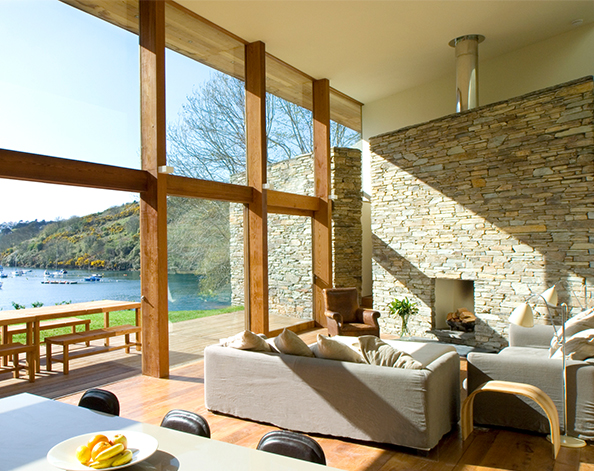With many buyers seeking the benefit of a rural retreat alongside their urban primary residence, demand for second properties has grown since the start of the pandemic. According to data from Hamptons, around 22,000 second homes were bought in the UK in the last year.
Many of these purchases will be motivated by lifestyle factors. Investec clients have purchased second homes in desirable areas where they can spend leisure time. “We have seen significant demand for properties in places like The Cotswolds, Somerset and Cornwall, as clients shift their mind-set from seeing their homes simply as a place to sleep, to places where they are going to live, work and play,” explains Private Banker Will Chipperfield.
When it comes to the qualities of these second homes, interior designer Katharine Pooley recently told us: “There is a real trend towards grown-up but playful and fun entertaining spaces.”

We have seen significant demand for properties in places like The Cotswolds, Somerset and Cornwall, as clients shift their mind-set from seeing their homes simply as a place to sleep, to places where they are going to live, work and play,
The Hamptons research identifies that the ability to use second homes as holiday lets might be an added advantage, particularly at a time when UK accommodation is in demand because of international travel restrictions.
“Owners who choose to rent out their second home do so for a variety of reasons, but a source of income and covering costs are the primary drivers,” said Savills in its ‘Second Homes: Global Trends in Ownership and Renting’ report. Second homeowners also cited security purposes and avoiding leaving the property empty as other motivations, in the survey.
There are a number of financial and regulatory considerations for clients looking to follow suit.

Many of our clients have a complex income that requires a tailored approach to borrowing so we look at their wealth holistically.
What you need to bear in mind
While you should always seek independent advice before making a decision about how to use your second home, some of the main issues might be:
- Whether your insurance is valid to use a home as a holiday let or you need to seek permission and inform your insurer
- If the property is leasehold, whether the landlord permits the intended use. If not, the landlord could be required to forfeit the lease.
- Whether planning permission is needed from a local council to let a property for a set period of time which may constitute a material change of use.
- You must also ensure that any agreement to let is for a specified time so that the holidaymakers must vacate at the end of the term.
- Covid-19 hygiene protocols mean that changeover between guests must be even more thorough than usual, which could make it a time-consuming process.
Tax on second homes
When it comes to purchasing a second home, there are tax implications to consider and independent expert advice should always be sought. A three per cent surcharge is applied on top of Stamp Duty Land Tax (SDLT) rates for second homes and for non-UK residents this is applied in addition to the existing two per cent surcharge for international buyers. Baseline SDLT rates will return to standard levels after the Stamp Duty Holiday on 1 October 2021.
From an earnings perspective, income from Furnished Holiday Lets (FHLs) is regarded differently to buy-to-let income. A homeowner can deduct the cost of their mortgage from their profits before calculating how much income tax to pay. In contrast, buy-to-let landlords cannot deduct the interest they pay on their mortgage from the rental income they declare to HMRC, but they may be able to claim a 20% mortgage interest tax credit instead. The profits from a holiday let count as earnings for pension purposes.
For a property to qualify as a FHL it must be located in the UK and be equipped with sufficient furniture for normal occupation. The home must also be available to let for at least 210 days, and lettings must be in place for 105 days. Therefore, homeowners can use a property for the remaining 155 days of the year. Other conditions apply to the qualification of a FHL which are fully explained on the HMRC website [link].
In practice, achieving FHL classification will depend on the agreement from your lender and other relevant parties. Some lenders may require that the primary use of the property must be for the borrower’s personal use, meaning that the property would not qualify.
Getting started
All things considered, the summer holidays can be a great time to use and enjoy a second home. If you’re interested in exploring your options, a conversation with your lender is recommended. You will need to inform your lender of how you plan to use your second home and ensure they are comfortable before proceeding.
“Many of our clients have a complex income that requires a tailored approach to borrowing so we look at their wealth holistically to calculate affordability,” says Will. “All enquiries are considered on a case-by-case basis.”
Interested in purchasing a second home? Please contact our Private Banking team to discuss the lending options available.
Disclaimer: YOUR PROPERTY MAY BE REPOSSESSED IF YOU DO NOT KEEP UP REPAYMENTS ON YOUR MORTGAGE.
This article is for general information purposes only and any reference to Tax should not be used or relied upon as professional advice. It is based on regulations in effect at the time of publication and no liability can be accepted for any errors or omissions, nor for any loss or damage arising from reliance upon any information herein. It is advisable to contact a professional advisor if you need further advice or assistance as the tax implications can vary depending on an individual’s personal circumstances and may be subject to change in the future.

